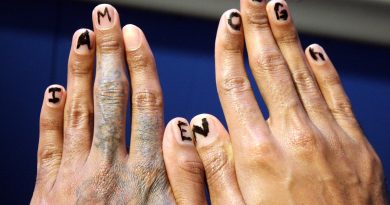Why Draw to communicate?
Words are easy to write, but difficult to understand. Pictures are a bit more tough to create, but more easily understood. Working remotely means good communication is more important than ever, & I wanted to talk about using drawing as a strategy in your communication arsenal.
Most people will say they cannot draw. Sound like you? This is despite having drawn many pictures at school & as a child, for years. (Remember those works of art on the fridge? – I know my parents used to pop right in the bin once I’d gone to bed!)
When people say that they cannot draw, they mostly mean its not of a standard they would be proud of. We are not entering art galleries though, remember that; we are trying to communicate with our colleagues & peers – drawing can really help. And with some training & practice, you too should be able to reap the benefits of combining verbal communication & drawing. So draw, & stop worrying about it looking perfect. Let us review what you can do, techniques you can use & practice to allow simple drawing & illustration help communicate in your job. This post isn’t for the artists, the Tony Harts, the Rembrandts or anyone who does this already, this is to hopefully give pointers to the literal dozens of people I’ve had reach out to me & ask how to do this, & what kit is used. Hopefully this is valuable to you. Want to know more? As always get in touch via Twitter.

Why words are not always the best way to communicate.
Although quick to write, words don’t always work that well. It’s partly hidden in this historical quote by the French mathematician and philosopher bloke, Blaise Pascal.
‘ If I had more time, I would have written a shorter letter!
So why write less? Often, too many words make the message harder to understand. Writing is easy, communicating with words is proper ard’. Things you write for communication purposes can quickly overwhelm & lack focus as we mentally waffle & meander through our thoughts.

Like a platform API, the listener needs time to interpret the message before having a proper response. Time is needed to build an image in ones mind, often, that image is inaccurate. In a Powerpoint setting (read my post, how to give good deck) presenting word heavy slides will make your audience feel overwhelmed & lost. Having to read & listen for example at the same time creates confusion through cognitive load. Your message gets lost & your written words become meaningless.
Why drawing works
Well, a drawing just works. Straight out of the box. Nothing else to say. The audience member doesn’t need to spend a lot of time interpreting it, because well, it’s just there. By using a drawing you’ve just removed a massive chunk of interpretation your audience would have had to have used.

You can’t always draw everything of course, but for main concepts, starting points & hooks in your story, it ensures you & the people you’re talking to are on the same page.
Build your visual toolbox
You’ll see from some of the images I’ve sketched below, the key is to create something & practice being able to do it again & again – which conveys the meaning, without the detail. For me, drawing a person is simply a elongated D shape, & a circle at the top for the head. The little L shaped sliver of colour on the body just represents that it’s a person wearing clothes. You hopefully get that from looking at it, but, I haven’t drawn a suit, or trousers or a jumper, just a little sliver of colour.

It’s the same for tech, an iPhone is just a couple of rectangles, a computer just a trapezoid with a few lines for the buttons. Take the time to practice building your own visual language that you’ll get quicker at again & again. This can be really powerful. Trust in the way the brain works – when you draw, draw the minimum to convey the meaning, rather than the detail your brain interprets. It’s that detail that gets in the way of peoples drawing ability.

The equipment & software
There’s lots of topics of debate here, but you just need to find something which works for you. Remotely, drawing is eminently powerful & getting your points across using a picture will really help you communicate much more effectively. You’ll broadly need two things. A graphics tablet & pen (to more naturally simulate drawing on paper) and some software to interpret the graphics tablet.
Graphics tablets
You can spend a ton on a graphics tablets from companies like Wacom & coupled with Photoshop or Illustrator & a decade of experience, you can create dreams. But that’s not where many will be. For under £100 you can purchase a tablet about the size of an A4 page, with on-tablet controls, a pen with multiple nibs & everything you need to get going.

Gaomon is an excellent brand offering just the right value for money, versus quality of hardware. For under £100 I recommend the M10K Pro, which is what I use.
Graphics software
I can only tell you what I use. But this will be unpopular from most people who use it. Microsoft Whiteboard (available for free from the Windows store) is a janky piece of software. Its sometimes unresponsive as it doesn’t cope well in an environment where you’re juggling multiple organisations & using SSO. *BUT* all that considered it broadly works & represents an excellent accomplice to the Gaomon tablet. Everything you see me draw (mostly) is done in Microsoft Whiteboard.
You want to try & give yourself an easy time & the combo above is the simplest to stop you from getting distracted by the tech or the tools. The Adobe suite is fantastic, but if you don’t know it, the learning curve steep. Wacom’s are amazing but if you’ve not dialled in your technique, you’ll become frustrated and lost on a very expensive gadget.
In Summary
If you’re interested in taking this further, I’ll be offering a workshop in the upcoming weeks with a pre-requisite that you’ll need a graphics tablet, or we can work in person live on a whiteboard, flesh to flesh as it were (ooh err) but it’s a fun workshop to get you to let go, be creative & learn how you can communicate more effectively with drawing.




